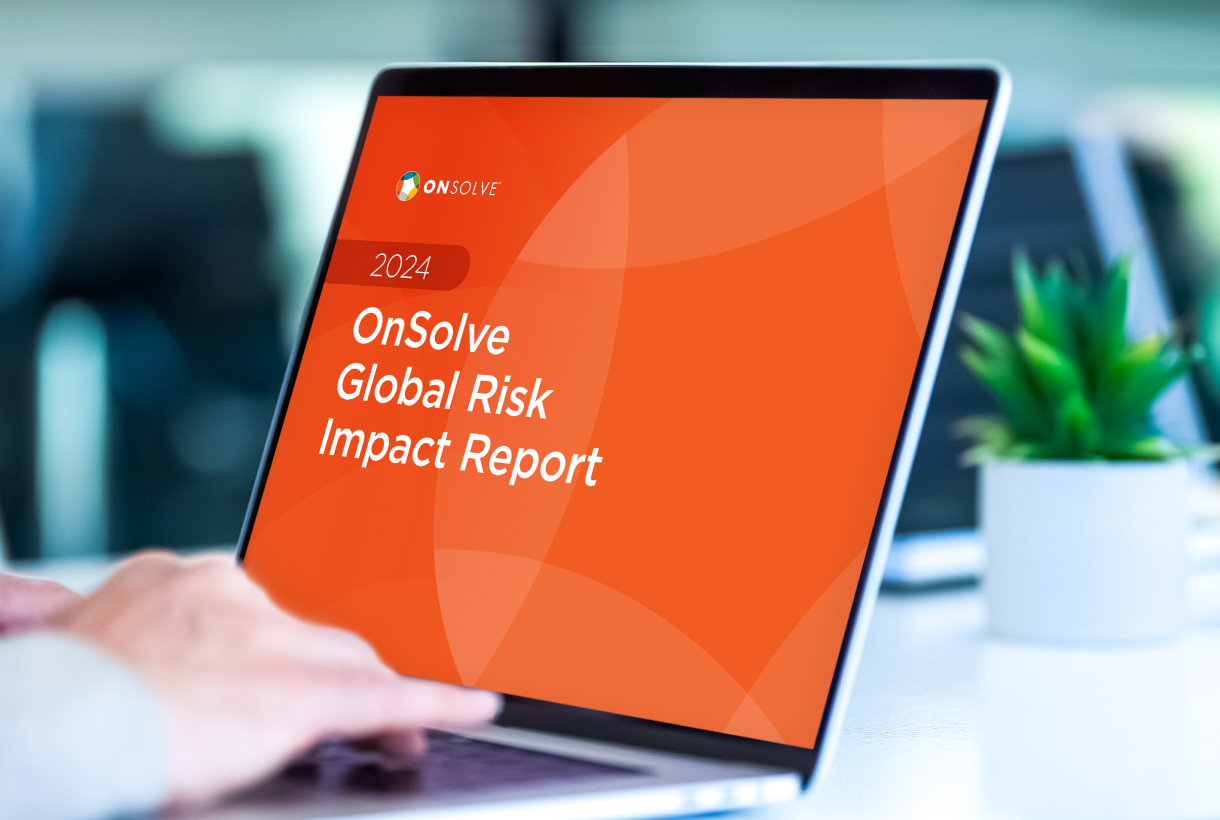It’s no surprise risks continue to rise. Security leaders see it in the headlines every day. From wildfires in Canada to smoke disrupting flights in the US; from “atmospheric rivers” to subsequent flooding in the West, to spikes in gun violence, civil unrest, supply chain disruptions, a kinetic war in Ukraine and the risk of escalation in China and Taiwan, risk is dynamic and rapidly evolving.
OnSolve’s recent Global Risk Impact Report compiled data from 2021 to 2022 and found that in the U.S., infrastructure and technology failures rose by 807%, transportation accidents rose 296% and extreme weather rose 42%.
As organizations prepare for a world where crises happen every day, understanding the cascading implications of physical threats has become one of the most challenging aspects for security leaders. With proactive preparation and actionable insights, security leaders can bolster physical security with risk intelligence.
The “Butterfly Effect” of Risk
To understand how to keep ahead, security leaders must first understand where to focus their attention. Threats are often followed by ripple effects that can create lasting impacts on an organization’s people and operations. For example, a national hotel chain is prepared to handle the impacts a hurricane can have on the southeast but did not expect the hurricane to result in flooding in New York City, creating a week of downtime and operational losses in an area the company wasn’t prepared to handle.
This “butterfly effect” proves that the aftermath of a threat on an organization can go further than the initial impact, underscoring the importance of proactive planning and preparation.
Successful risk mitigation plans are only as good as the data they are based on. For a global organization, there are thousands of physical disasters happening every minute around the world — how can any one person or team possibly pay attention to all of them? By leveraging artificial intelligence (AI) and machine learning (ML), verified by analysts, risk intelligence can combine an external analysis of vetted threats and correlate them with internal data surrounding an organization’s people, operations or assets. This powerful data empowers leaders with actionable insights into potential crises, so they know which threats to prioritize and when/where/how to activate crisis teams.
Crises are near impossible to predict, but with the right insights, organizations in vital industries can better prepare and mitigate their impact. Here are three industry examples that highlight the prevalence of risk intelligence in today’s dynamic risk landscape.
2024 Global Risk Impact Report
Every threat can become a cascading, dynamic risk. Learn how making the shift from risk prevention to resilience management can help organizations navigate the unexpected impacts of physical threats and strengthen preparedness.
A Hospital Stays Ahead of Potential Threats
Hospitals have much to consider when it comes to physical security, including protecting the campus, patients and off-site employees, which makes having the ability to proactively prepare for any threats a necessity. Having a complete picture of the risk landscape around a hospital in an area known for civil unrest allows the director of support services to keep a pulse on local incidents and threats to the campus. It also allows the hospital to direct ambulance drivers through road closures and traffic, decreasing the amount of time until a patient arrives on-site and protects nurses as they travel to visit house-bound patients.
Maintain Business Operations and Unlock Agility During Sudden Extreme Weather
Business services organizations may not be the first to come to mind when thinking about dynamic risk, but events like road closures and severe weather may require shifting resources quickly and at a moment's notice.
Keep Critical Infrastructure Running During Unexpected Disruption
An integrated communications and IT provider uses risk intelligence data to make faster, more informed decisions. With employees dispersed across all different regions, keeping employees safe no matter where they are is the organization’s top priority. With the ability to pinpoint a critical event and the impact or direction of the event through visual dashboards that monitor the company’s facilities, logistics and personnel movements, the company can efficiently safeguard its people no matter where in the world they are.
The Future of Crisis Management
Without question, physical threats continue to have a sudden and unexpected ripple effect across organizations in vital industries. As security and risk leaders prepare for a world where crises happen every day, understanding the ripple effects that physical threats have on an organization is challenging.
Powerful data, fueled by AI, can empower teams with actionable insights on where their organization is most vulnerable and when and how to prepare for a crisis. Security leaders cannot predict the unexpected, but powerful data can keep leaders ahead, protect people and improve operational efficiency in the face of a crisis.
Learn more about the rising physical threats facing organizations and why proactive preparation is a competitive advantage in the 2023 OnSolve Global Risk Impact Report.
Originally published in Security Magazine, June 2023


